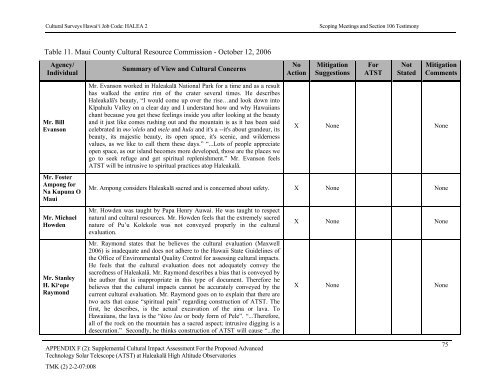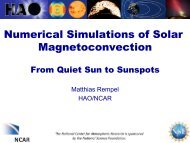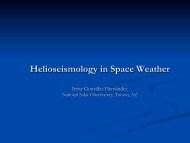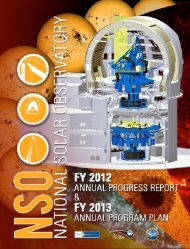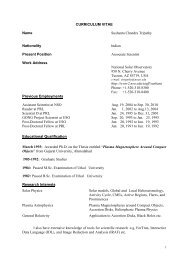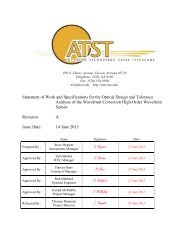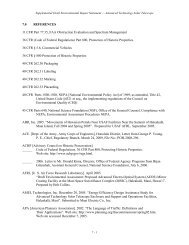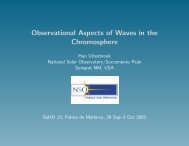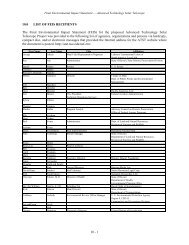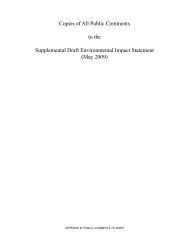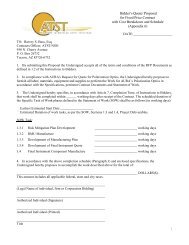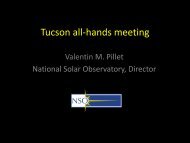F2 - ATST
F2 - ATST
F2 - ATST
You also want an ePaper? Increase the reach of your titles
YUMPU automatically turns print PDFs into web optimized ePapers that Google loves.
Cultural Surveys Hawai‘i Job Code: HALEA 2 Scoping Meetings and Section 106 TestimonyTable 11. Maui County Cultural Resource Commission - October 12, 2006Agency/IndividualSummary of View and Cultural ConcernsNoActionMitigationSuggestionsFor<strong>ATST</strong>NotStatedMitigationCommentsMr. BillEvansonMr. FosterAmpong forNa Kupuna OMauiMr. MichaelHowdenMr. StanleyH. Ki‘opeRaymondMr. Evanson worked in Haleakalā National Park for a time and as a resulthas walked the entire rim of the crater several times. He describesHaleakalā's beauty, “I would come up over the rise…and look down intoKīpahulu Valley on a clear day and I understand how and why Hawaiianschant because you get these feelings inside you after looking at the beautyand it just like comes rushing out and the mountain is as it has been saidcelebrated in mo‘olelo and mele and hula and it's a --it's about grandeur, itsbeauty, its majestic beauty, its open space, it's scenic, and wildernessvalues, as we like to call them these days.” “...Lots of people appreciateopen space, as our island becomes more developed, those are the places wego to seek refuge and get spiritual replenishment.” Mr. Evanson feels<strong>ATST</strong> will be intrusive to spiritual practices atop Haleakalā.Mr. Ampong considers Haleakalā sacred and is concerned about safety. X None NoneMr. Howden was taught by Papa Henry Auwai. He was taught to respectnatural and cultural resources. Mr. Howden feels that the extremely sacrednature of Pu’u Kolekole was not conveyed properly in the culturalevaluation.Mr. Raymond states that he believes the cultural evaluation (Maxwell2006) is inadequate and does not adhere to the Hawaii State Guidelines ofthe Office of Environmental Quality Control for assessing cultural impacts.He feels that the cultural evaluation does not adequately convey thesacredness of Haleakalā. Mr. Raymond describes a bias that is conveyed bythe author that is inappropriate in this type of document. Therefore hebelieves that the cultural impacts cannot be accurately conveyed by thecurrent cultural evaluation. Mr. Raymond goes on to explain that there aretwo acts that cause “spiritual pain” regarding construction of <strong>ATST</strong>. Thefirst, he describes, is the actual excavation of the aina or lava. ToHawaiians, the lava is the “kino lau or body form of Pele”. “...Therefore,all of the rock on the mountain has a sacred aspect; intrusive digging is adesecration.” Secondly, he thinks construction of <strong>ATST</strong> will cause “...theXXXNoneNoneNoneNoneNoneNoneAPPENDIX F (2): Supplemental Cultural Impact Assessment For the Proposed AdvancedTechnology Solar Telescope (<strong>ATST</strong>) at Haleakalā High Altitude ObservatoriesTMK (2) 2-2-07:00875


